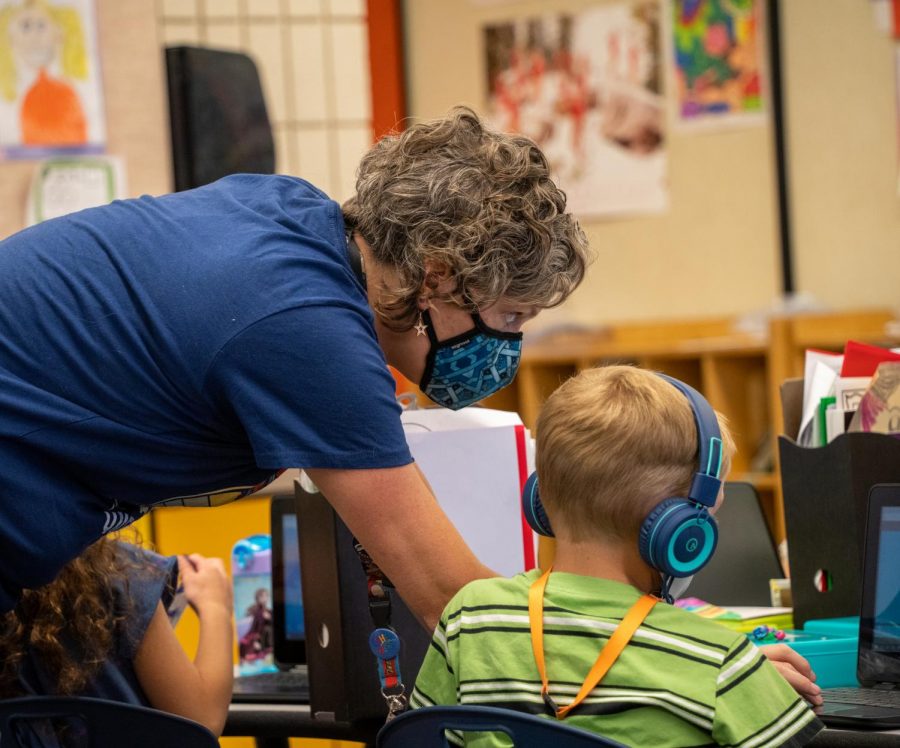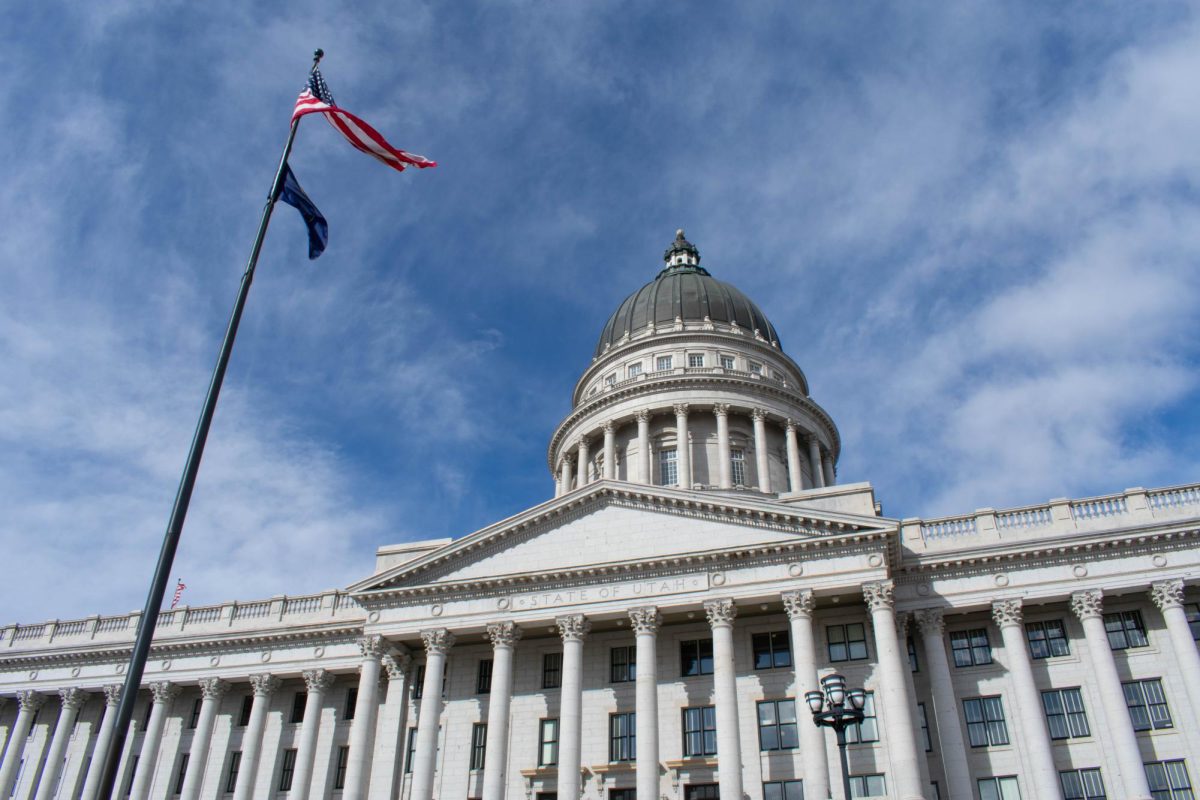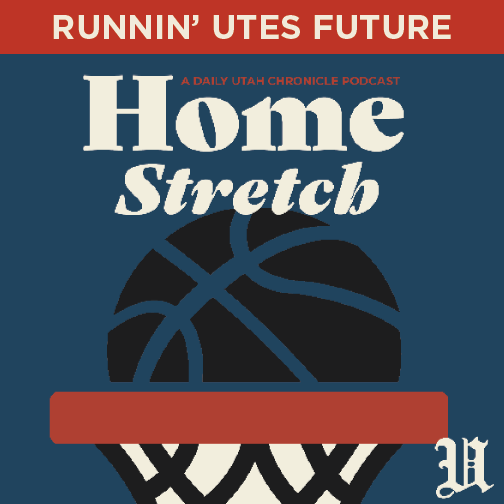Soter: Overcoming Pandemic Learning Loss Starts With Valuing Teachers
Sarah Machol helps a student in Wasatch Elementary School, Salt Lake City, Utah on September 17th, 2021. (Photo by Xiangyao “Axe” Tang | The Daily Utah Chronicle)
September 28, 2021
The 2021-22 school year seems like the most “normal” one since before the pandemic. As a student who attended a public K-12 institution during that time, I know all the difficulties of pandemic learning.
Luckily for me, COVID-19 started in the second semester of my senior year, meaning I had already completed most of my credits. Academically speaking, I didn’t miss too much. Socially speaking, I still don’t think I’ve fully recovered.
But elementary school students suffered from significant losses with remote learning.
Grade-school students fell behind academically and socially because of the pandemic. Now, educators bear the burden of catching them up.
But this responsibility, despite weighing heavily on many teachers, is not fairly compensated. We must look to our teachers for guidance on how to move forward and give them fair compensation for their expertise and hard work.
It’s hard enough to corral children through class in person — let alone online. But for nearly two years, K-12 educators faced this reality.
Now, as fewer schools in Utah offer online learning, we’re seeing the effects of online schooling. A 2020 study found that 97% of teachers saw varying levels of learning loss in their students. The same study also discovered that 57% of teachers estimate that their students are at least three months behind in their social-emotional growth.
With these frightening statistics in mind, we should also remember the COVID-19 pandemic is far from over, especially for those under the age of 12, who still cannot get vaccinated. Because of this, the delta variant poses a unique risk to children.
The Salt Lake Tribune reported 1,218 positive COVID-19 tests on August 31, which consisted of 270 K-12 students. That means that those students needed to stay home for at least two weeks, putting them further behind than they already were.
In an interview with Brandon Moore, the principal at Robert Frost Elementary School, he further illustrated what the pandemic did to students beyond the numbers. Moore said, “Teachers were having to go back and really fill in a lot of gaps that we wouldn’t [have to] otherwise. Their scope, sequence and the speed at which they went through the curriculum really had to slow down.”
Elementary-age students are in a critical part of their psychological development. By being around kids their age, they learn life-long social skills that will impact them and their relationships. But, the limited peer interaction amid the COVID-19 pandemic significantly delayed that development.
Moore said this led to an influx of anxiety in students. “We’re seeing a lot of development where students are looking for reasons to get out of class,” he said, “When we delve deeper, it’s actually that they have social anxiety. They don’t feel comfortable being [in school] and they want to go back home.”
To help students succeed socially, Moore has used his portion of the $205 million given to Utah by the U.S. Department of Education to ensure that his school’s social worker visits more frequently to help combat this anxiety.
Academically, Moore has put an emphasis on small group instruction to help students catch up — and research shows that his approach works. He said, “When we have our small group instruction, we can really identify which students struggle, which students excel, and middle-of-the-road students. Then we can divide them up and work with them, in a smaller setting. [This] allows our teachers to differentiate their instruction, to meet the needs of those specific students.” Moore clarified that he also used the money for extra support in the classroom to make this small group instruction possible.
While Moore believes increased support both academically and emotionally will lead to progress, he said that finding that support has been difficult because of the labor shortage. “We can’t find people to hire. There’s a shortage of people wanting to work in schools.”
And there are some causes for this. Teaching assistants in the state of Utah only make a jaw-dropping $26,300 annually. To put into perspective, those receiving unemployment benefits in Utah can receive up to $22,620 for 39 weeks. And teachers aren’t making much more at an average of only $56,401 annually. To fill the gaps created by the pandemic, we must listen to educators themselves who understand this problem best. But if we don’t begin to pay them what they deserve, they won’t be there for us to listen to.
Students in the public education system right now will one day be our future leaders. They will follow my generation in challenging climate change, impending technological doom and other unknowns our society will face.
We have a duty to set them up for success, and educators will play an integral role in that endeavor. Let’s listen to them, advocate for them and, most importantly, place higher value on the instrumental work they do to benefit our society. The alternative is far too detrimental to not.











